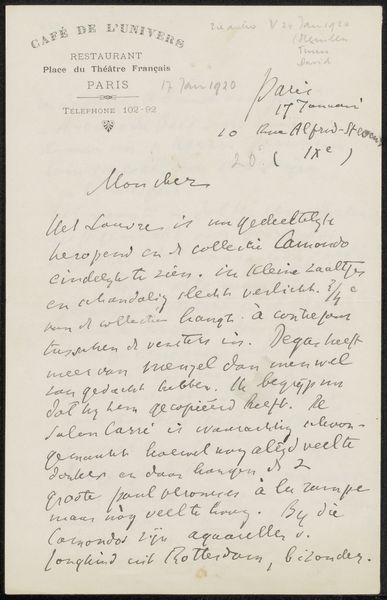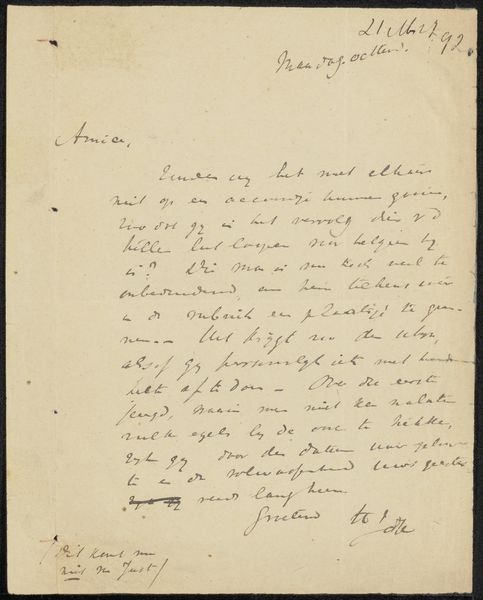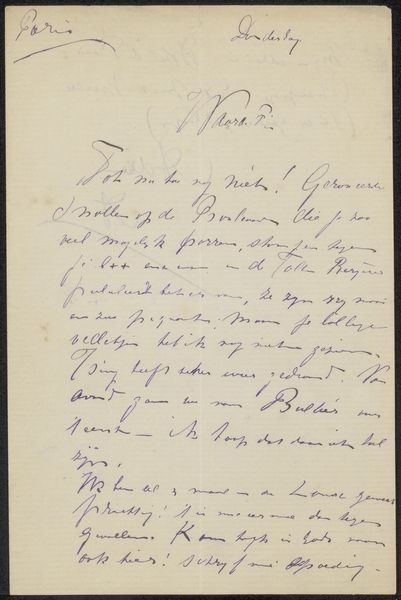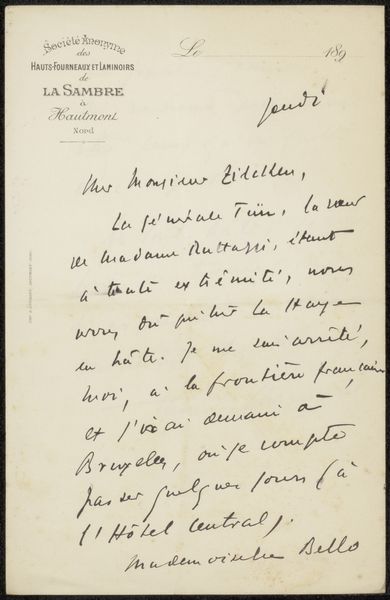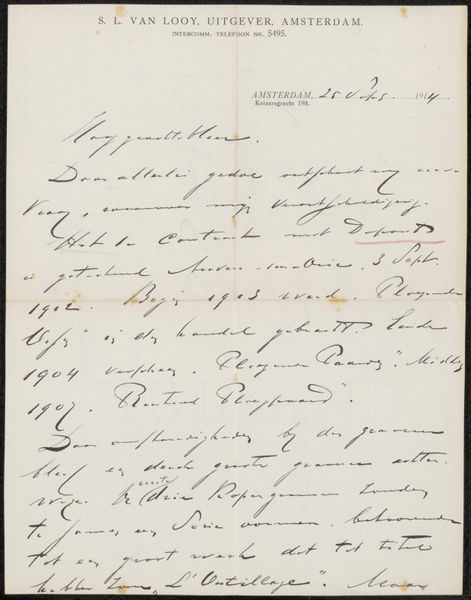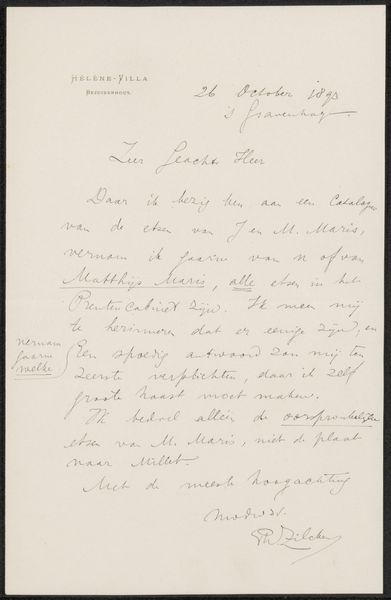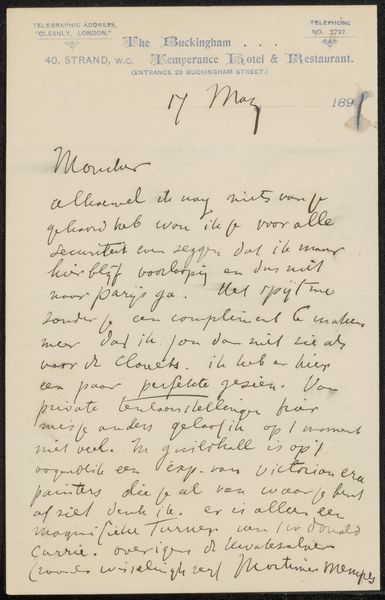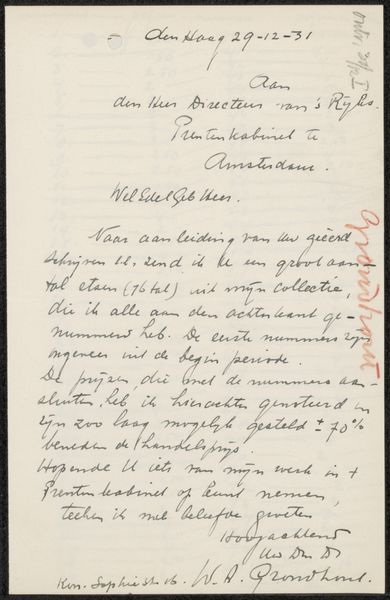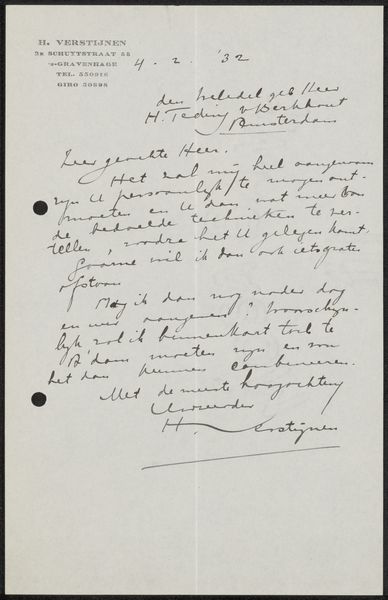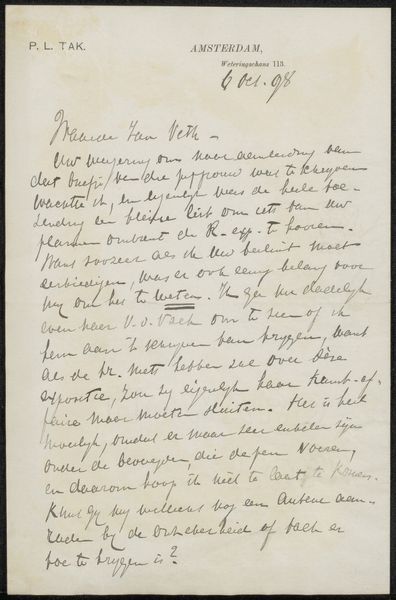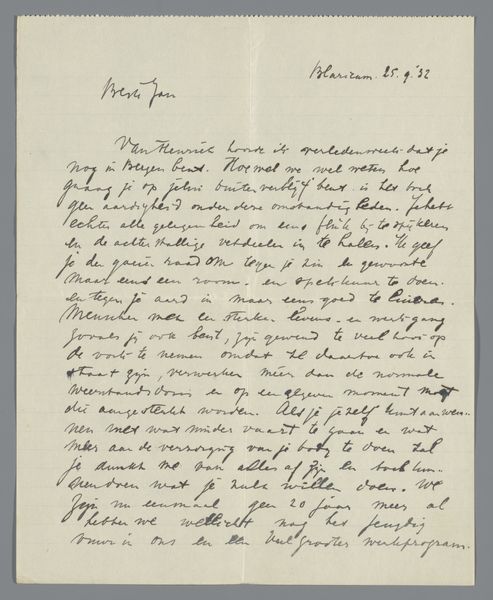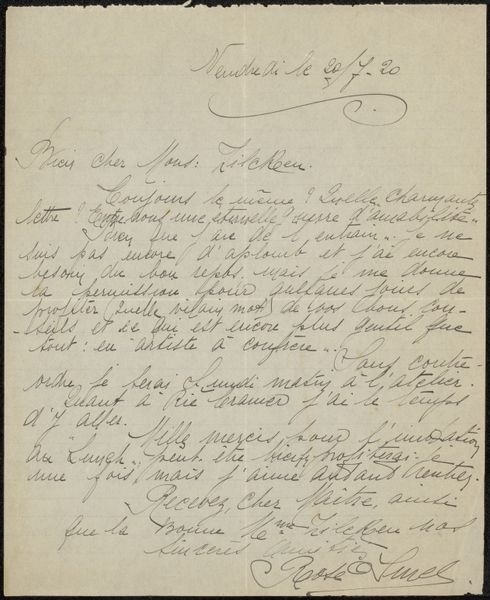
drawing, paper, ink
#
portrait
#
drawing
#
paper
#
ink
Copyright: Rijks Museum: Open Domain
Curator: Today we’re looking at a work by Isaac Israels entitled "Brief aan Jan Veth," created sometime between 1875 and 1925. It's an ink drawing on paper. Editor: The first thing that strikes me is its intimacy. It looks like a personal note, hastily penned. The handwriting seems very fluid. Curator: Indeed. It’s fascinating to consider the social dynamics at play here. Jan Veth was a prominent critic and artist, and this letter likely reveals something of their professional relationship. We see here Koninginnegracht 2 Den Haag which indicates the location where it was drafted. Editor: I agree. The choice of materials—ink on paper—also speaks to a particular artistic practice and access. It’s almost raw. How was Israels perceived at the time? Were his artistic correspondences regarded as a form of "art," or as a more personal mode of exchange? Curator: He moved in influential artistic circles and was part of a group in Amsterdam. There was significant value put on artwork. These artworks can reflect their professional networks and strategies for cultivating a reputation. In a way, this reflects social and economic dynamics of artistic communities. Editor: Looking closer at the text, the way the ink bleeds into the paper. Did Israels deliberately use this type of paper for particular qualities? It reminds us that art creation always hinges on production and choice of these things. Curator: Perhaps the nature of the ink was deliberate, reflecting the spontaneity of his method, or maybe it reflects a lack of access to certain high-end materials. What the material choices do make visible is their connection to daily, mundane, even labor practices. Editor: Absolutely, looking at "Brief aan Jan Veth" challenges traditional art hierarchies, by focusing attention not just on its surface or aesthetics, but rather on materials, effort, and everyday transactions behind art's making. Curator: By examining an apparently simple handwritten piece, we can unpack not just one artist’s technique or intentions but also the dynamics of a broader world of artistic production and the nature of relationships in that realm. Editor: A telling reminder that every artwork encapsulates its socio-material moment.
Comments
No comments
Be the first to comment and join the conversation on the ultimate creative platform.
